Jaeger-LeCoultre
Jaeger-LeCoultre Reverso: The Story of an Icon
Jaeger-LeCoultre
Jaeger-LeCoultre Reverso: The Story of an Icon
Today, the farms and barns here are far and few between, with hamlets like Le Sentier and Le Brassus representing Switzerland’s cradle of high watchmaking. About an hour’s drive north of Geneva, the picturesque village of Le Sentier is where Jaeger-LeCoultre’s original workshop was established in 1833 by Antoine LeCoultre.

Jaeger-LeCoultre’s manufacture in Le Sentier, Switzerland.
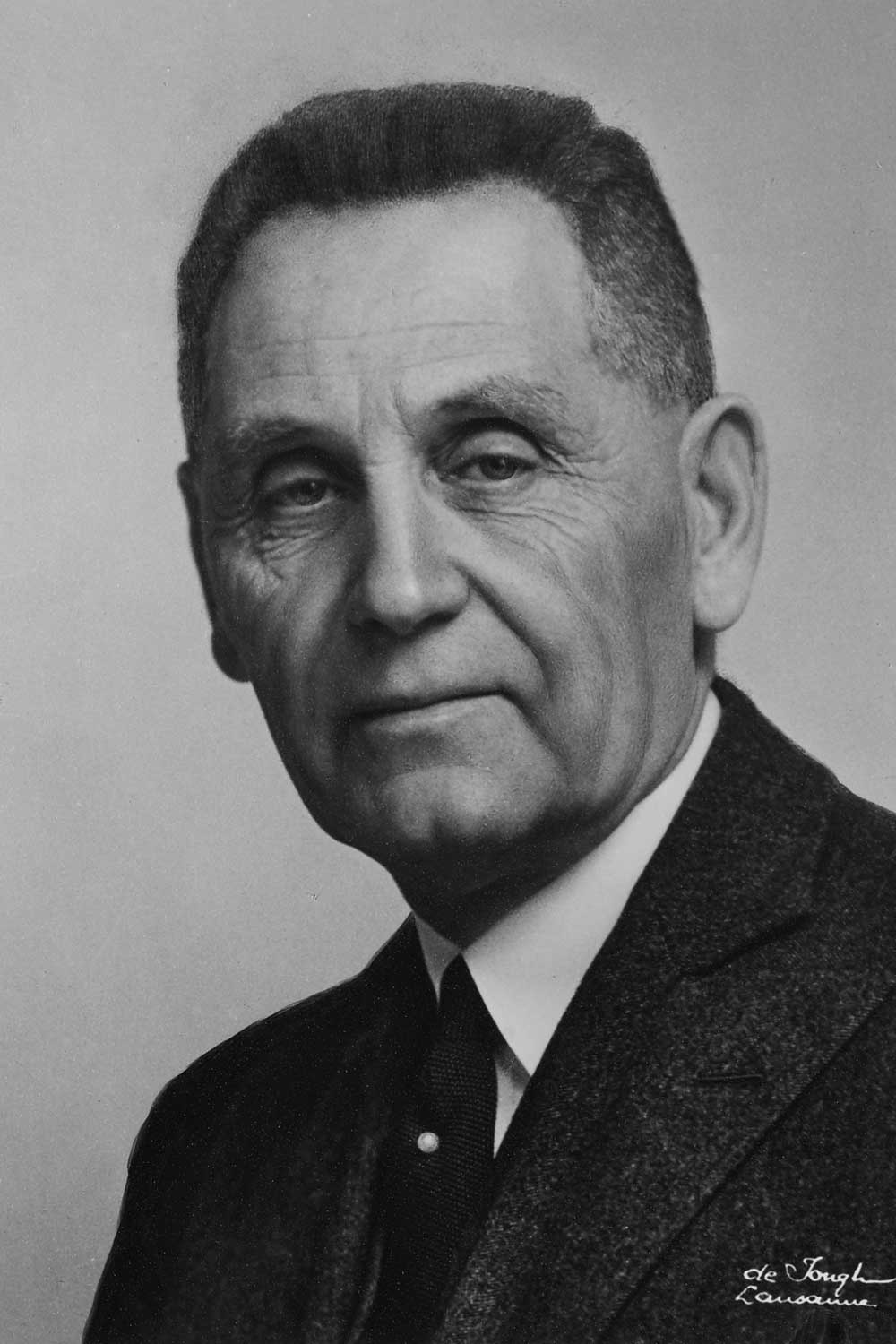
Antoine LeCoultre
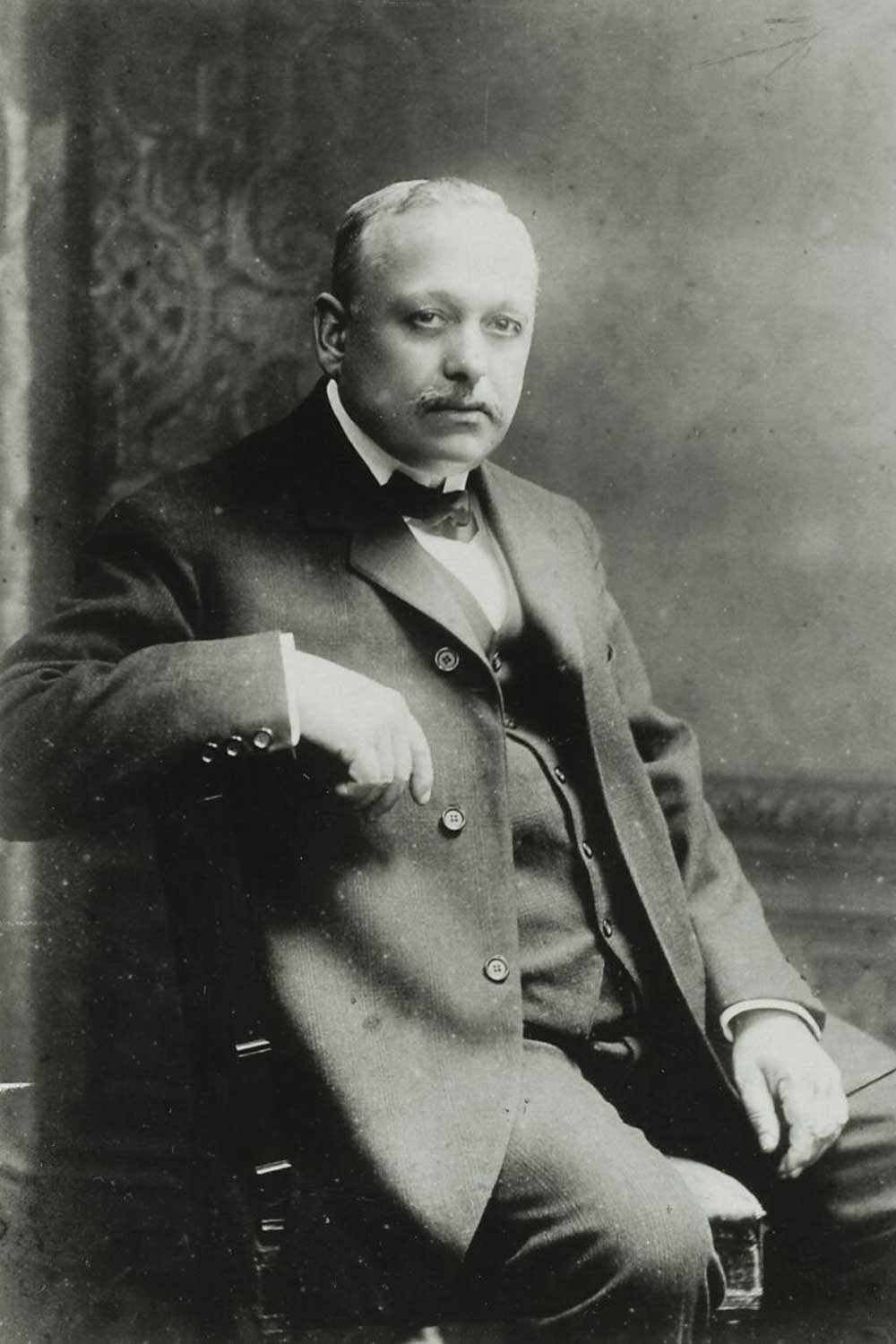
Edmond Jaeger
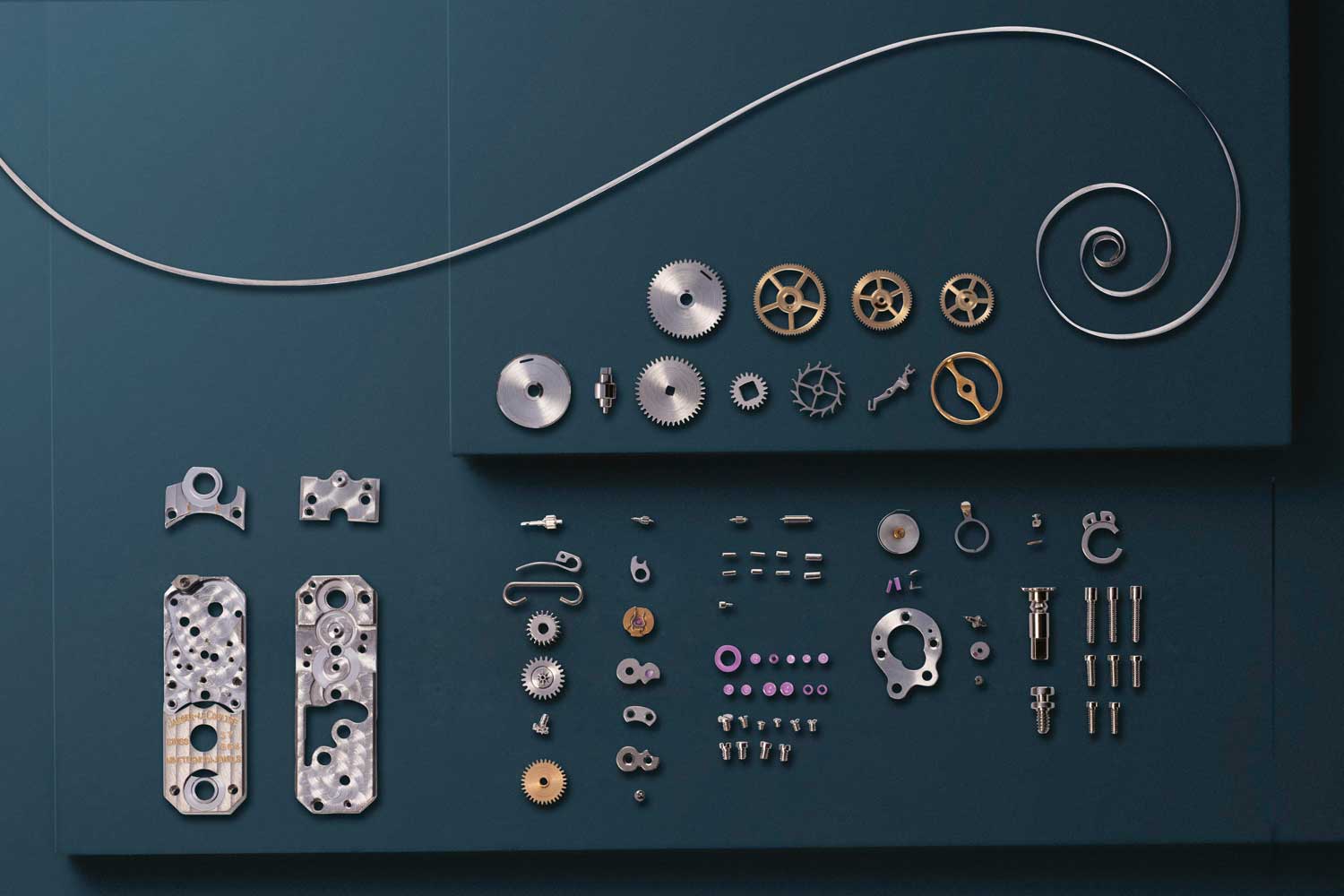
Created in 1929, Jaeger-Lecoultre’s Calibre 101 is the smallest mechanical movement ever made and is in production to this day
With the approval of both both César de Trey, who had already registered the name Reverso, and Jacques-David LeCoultre, who was on the Board of Directors of Patek Philippe at the time, eight Reverso cases were sold to Patek Philippe between December 1931 and April 1932. Two of those watches, signed as Patek Philippe, are still displayed at Patek’s famed museum in Geneva.
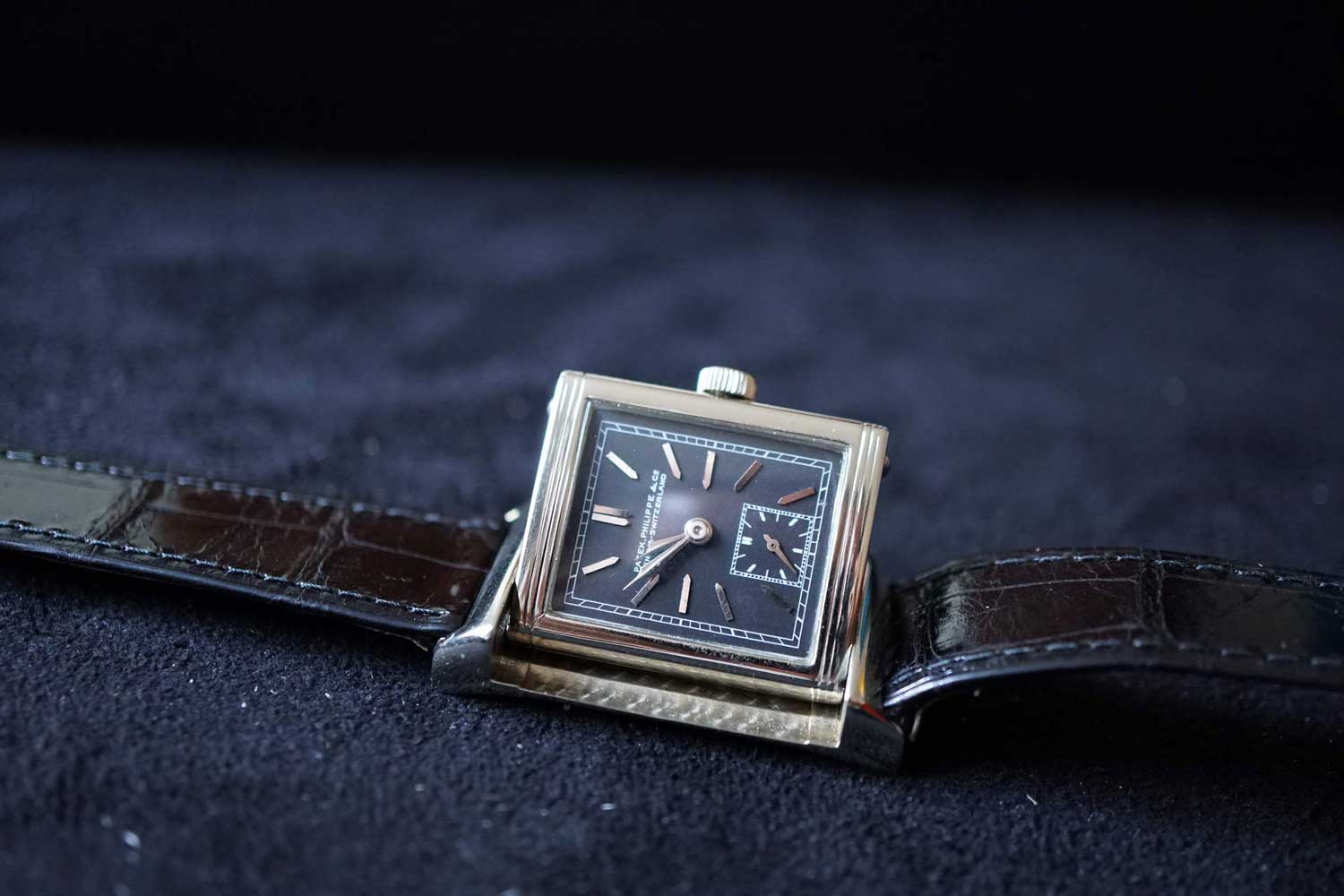
Between December 1931 and April 1932, Jaeger-LeCoultre built a handful of Reversos, eight in total, badged as Patek Philippes, with Jaeger-LeCoultre movements inside. (Image: le-monde-edmond.com)
A Timeless Design
By the 1930s, functional elegance started emerging as one of the primary criteria for men’s watches. As sportswear like knickerbockers found patrons in the likes of the then Prince of Wales and tennis player René Lacoste’s practical, half-sleeve shirts made headlines for their comfort and style, trends in wristwear too began to change. “The tennis or polo shirt was a crucial catalyst in changing attitudes towards what constituted appropriate dress, and its modernizing effect can be likened to the impact of the wristwatch,” says renowned author, historian and watch expert Nick Foulkes. “The Reverso’s design was dictated not by a desire to be different but by mechanical functionality. Its value lay not in the costliness of its materials and lavishness of its embellishments but in the ingenuity and intricacy of its engineering. Its choice of materials, its intentions, its innovative manufacture and the need it met made the Reverso, in many ways, the quintessential Art Deco product,” he says.
Thanks to its popularity among racing enthusiasts, polo players and skiers, Reverso soon became one of the top-selling luxury sports watches of the 20th century. The watch was offered in all steel, all gold, or bimetal (gold case with steel cradle). With options to be worn as pendants, handbag clips and dainty wristwatches, the watch also adapted to suit the needs of women in those days. For those seeking even greater individuality, brightly colored lacquer dials could be made to order, and the reverse side of the case personalized with engraving and lacquer.
Over the last nine decades, not much has changed in the design of the Reverso, but Jaeger-LeCoultre has been successful in making the watch as enticing for the young, innovation-obsessed enthusiasts as for the traditionalists. From King Edward VIII, who had the royal crest inscribed on his Reverso to General Douglas MacArthur, who owned a Reverso with a rich black dial and lacquered monogramming on the case back that read “D MAC A”, the Reverso has a long list of rich and famous patrons.
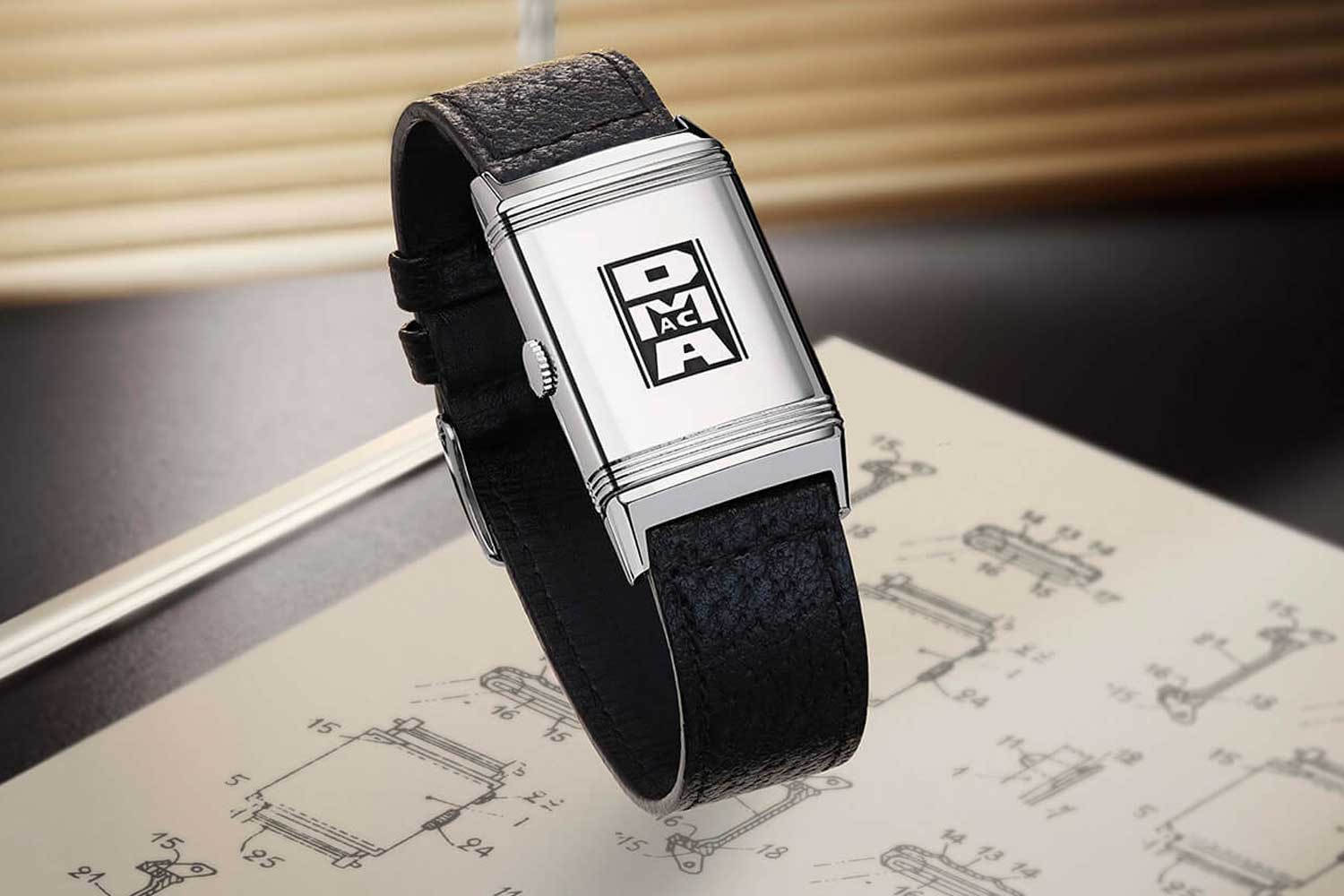
General Douglas MacArthur’s Reverso with a rich black dial and lacquered monogramming on the case back that read “D MAC A”
Exceptional Craftsmanship
Long before “personalization” became a big trend among watch enthusiasts, Jaeger-LeCoultre offered its clients unique possibilities of customization through the Reverso’s caseback, which served as blank canvases to be adorned with family crests, monograms, messages, paintings and more.
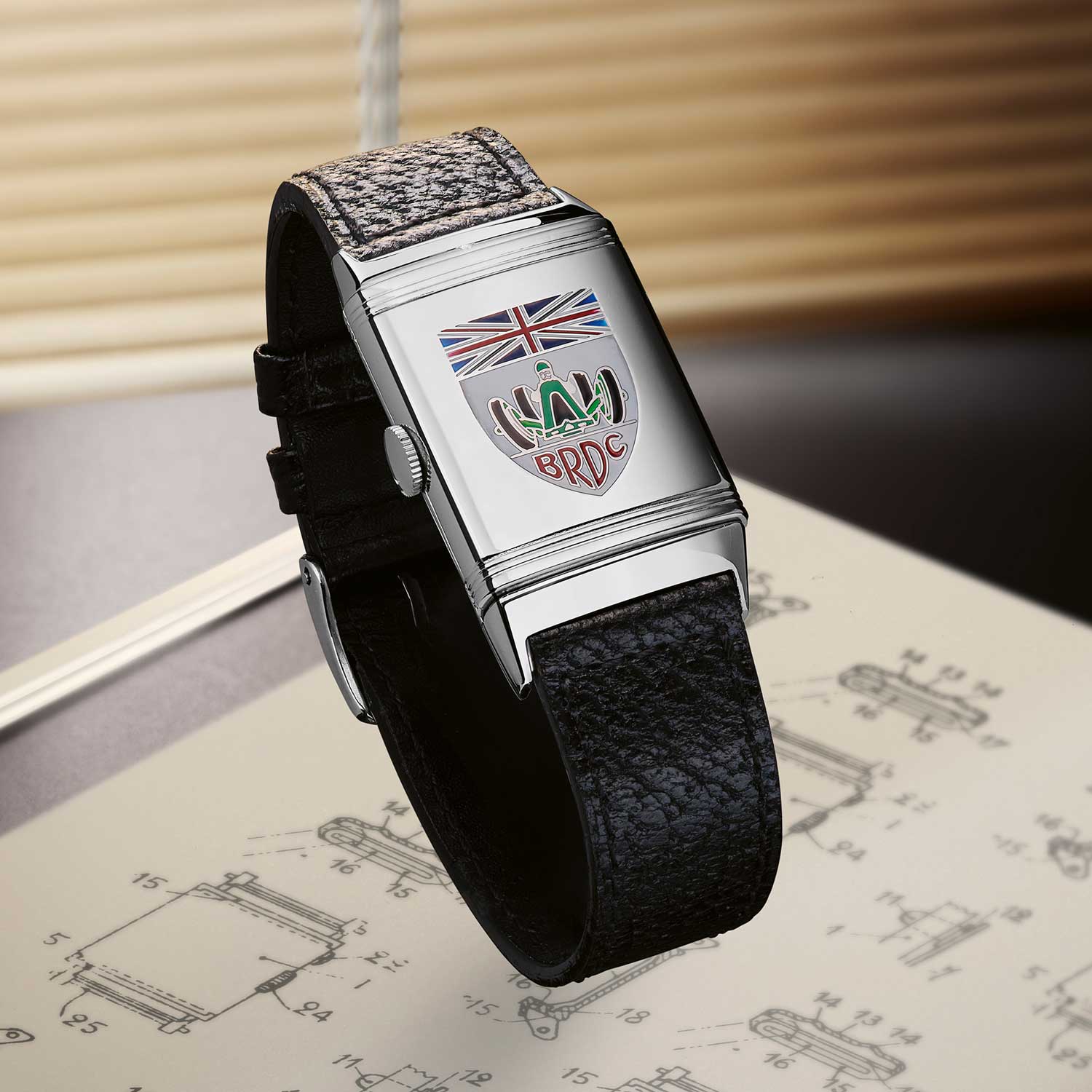
A 1937 timepiece engraved with the British Racing Drivers Club emblem
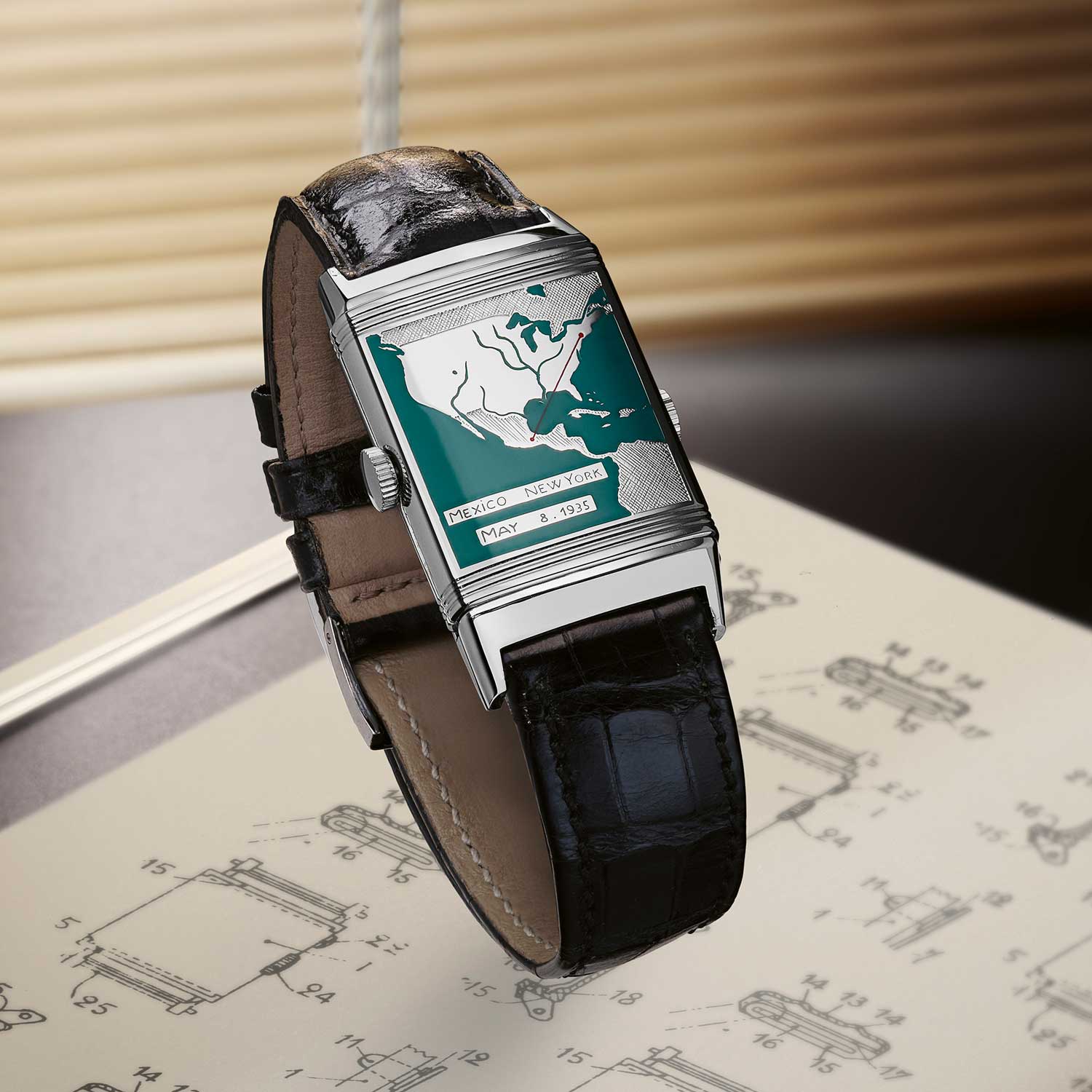
A 1935 Reverso that commemorated the record-setting flight from Mexico City to New York by the aviator, Amelia Earhart
In the early 1990s, Hungarian watchmaker Miklos Merczel started to utilize the rear of the Reverso case for miniature enamel paintings. He launched the in-house enamel workshop at Jaeger-LeCoultre in 1996 with a set of watches that presented Czech artist Alphonse Mucha’s famous decorative panels, The Seasons, from 1896.
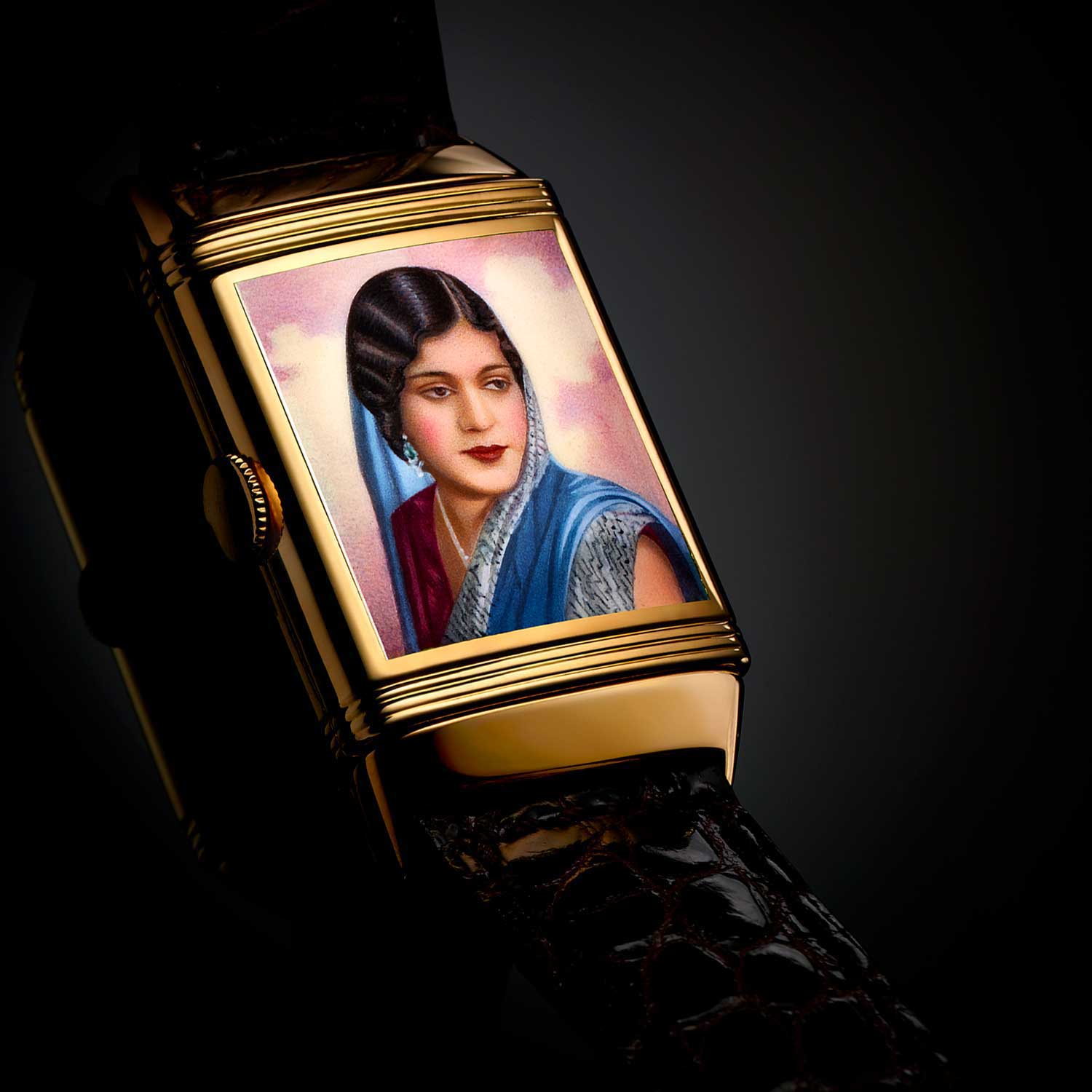
A 1936 Reverso with the portrait of Maharani Kanchan Prabha Devi of Tripura
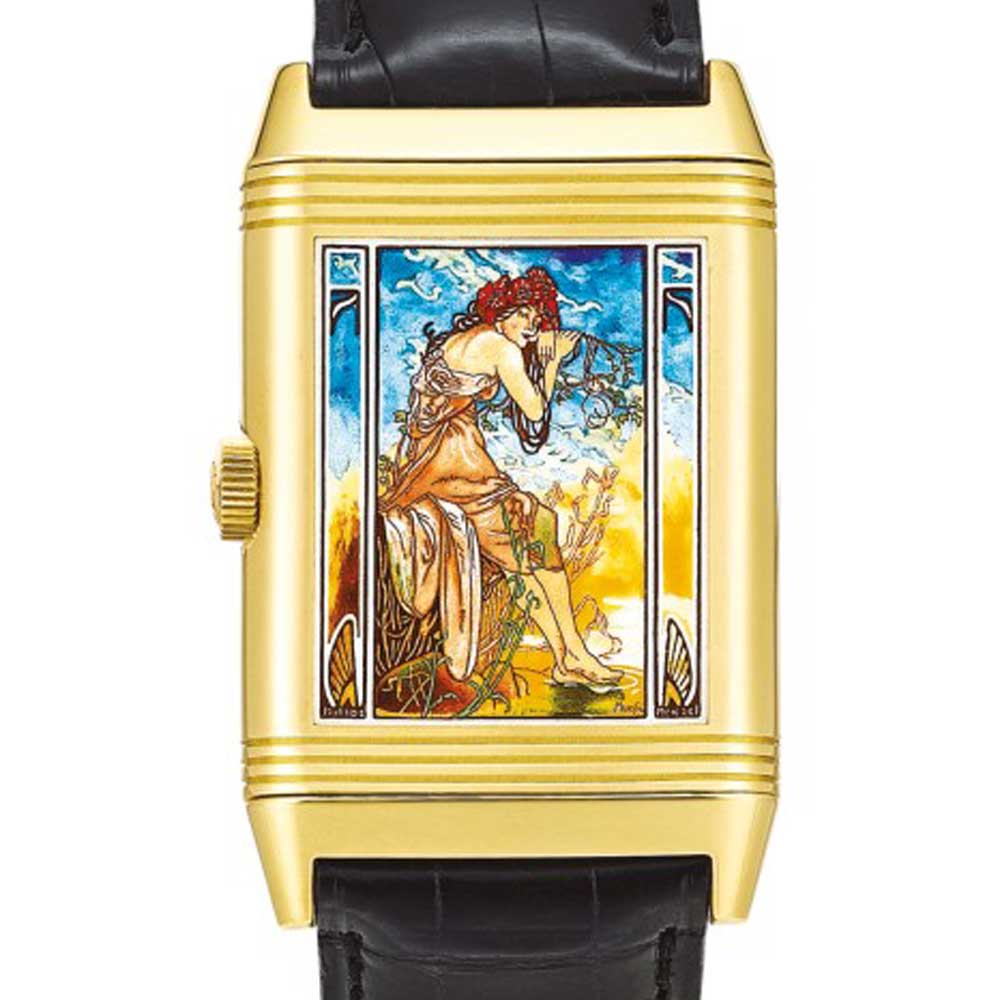
Originally painted by Czech artist Alphonse Mucha, reimagined onto the wrist by Miklos Merczel (Image: Sothebys.com)
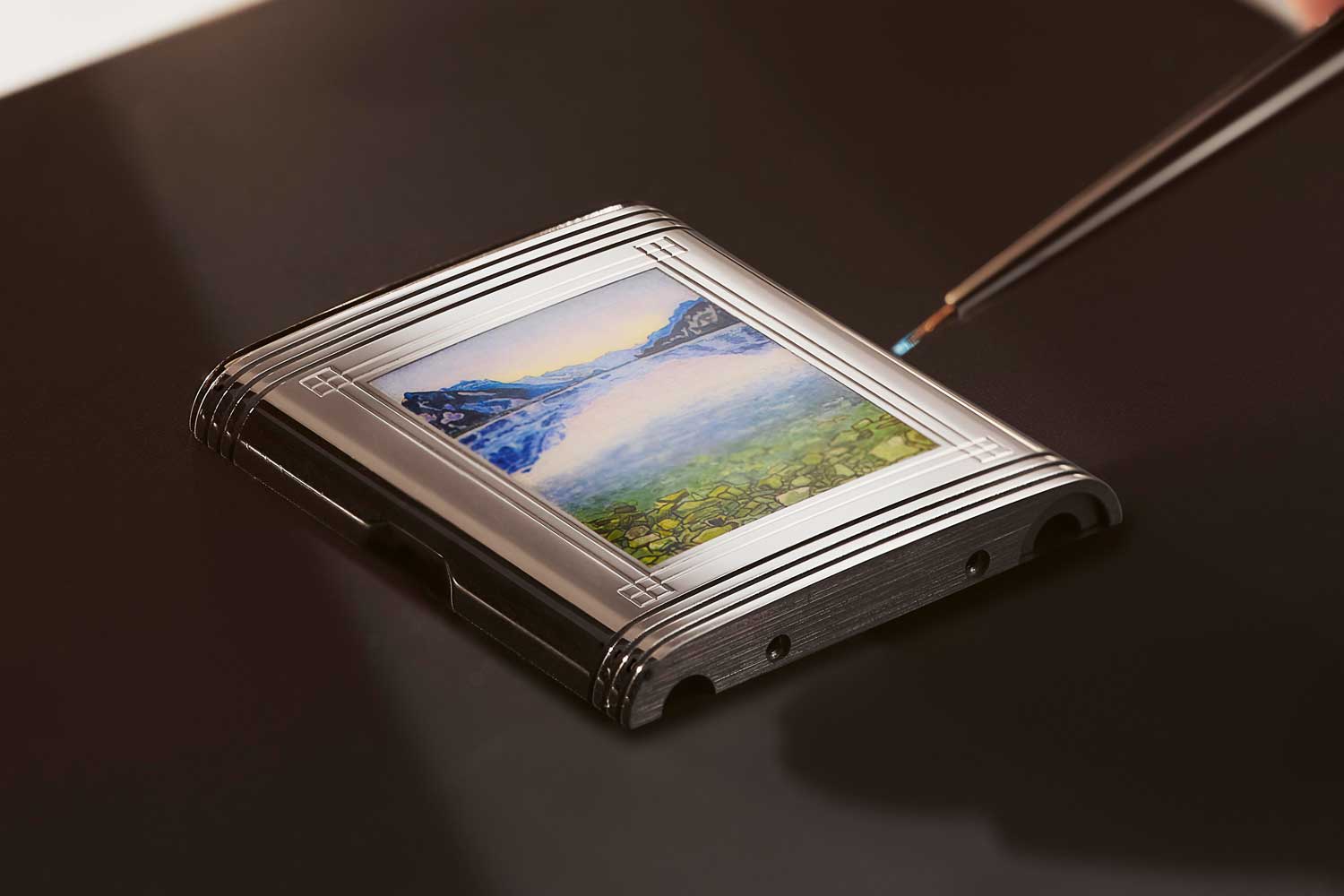
The Reverso's caseback is the blank canvas for exquisite enamel art
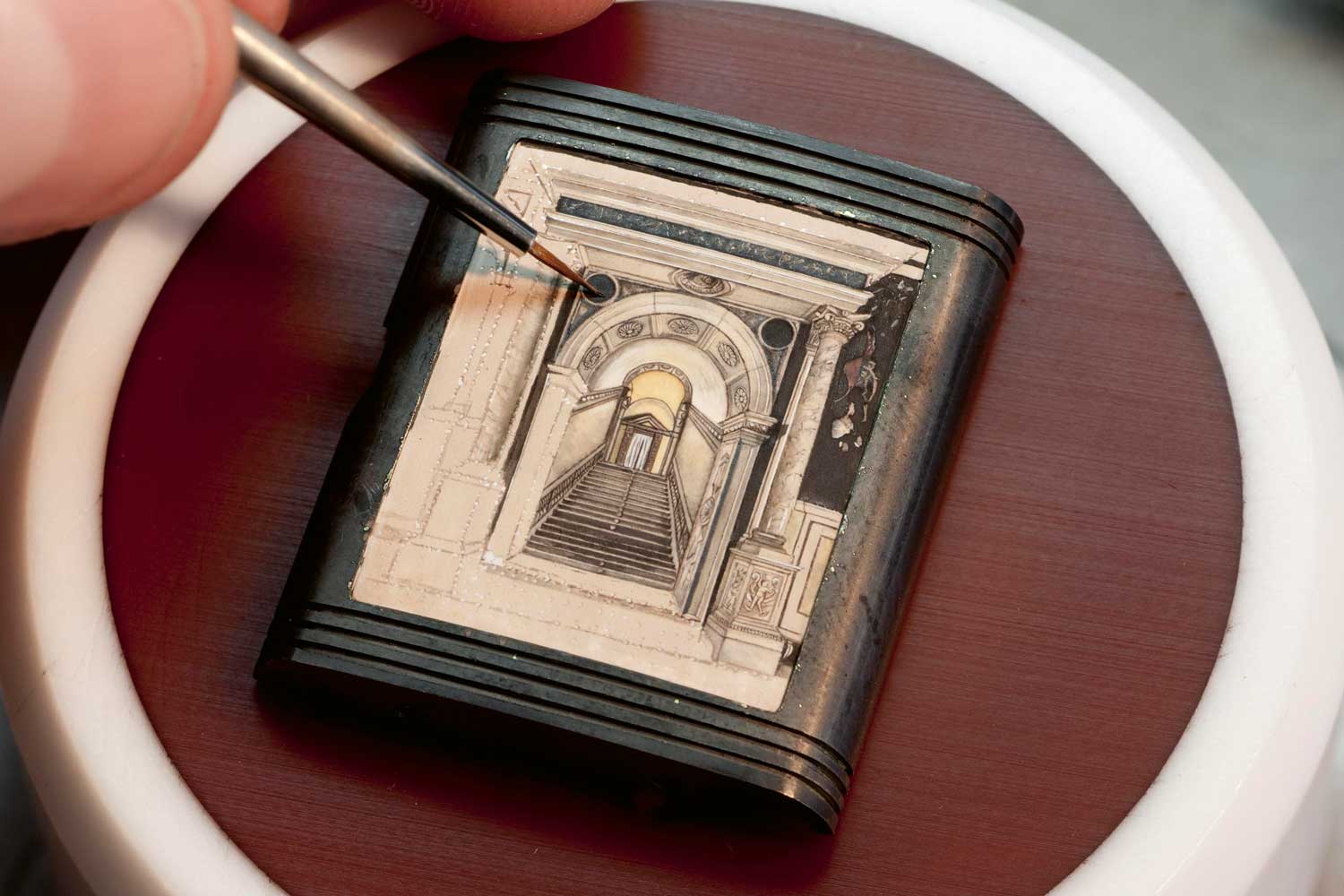
Reverso Grande Taille Scuola Grande di San Rocco

Reverso Tribute Enamel - Hokusai ‘Kirifuri Waterfall’

As a tribute to the Dutch painter Vincent van Gogh with a special Reverso à Eclipse featuring van Gogh’s famous Sunflowers painting
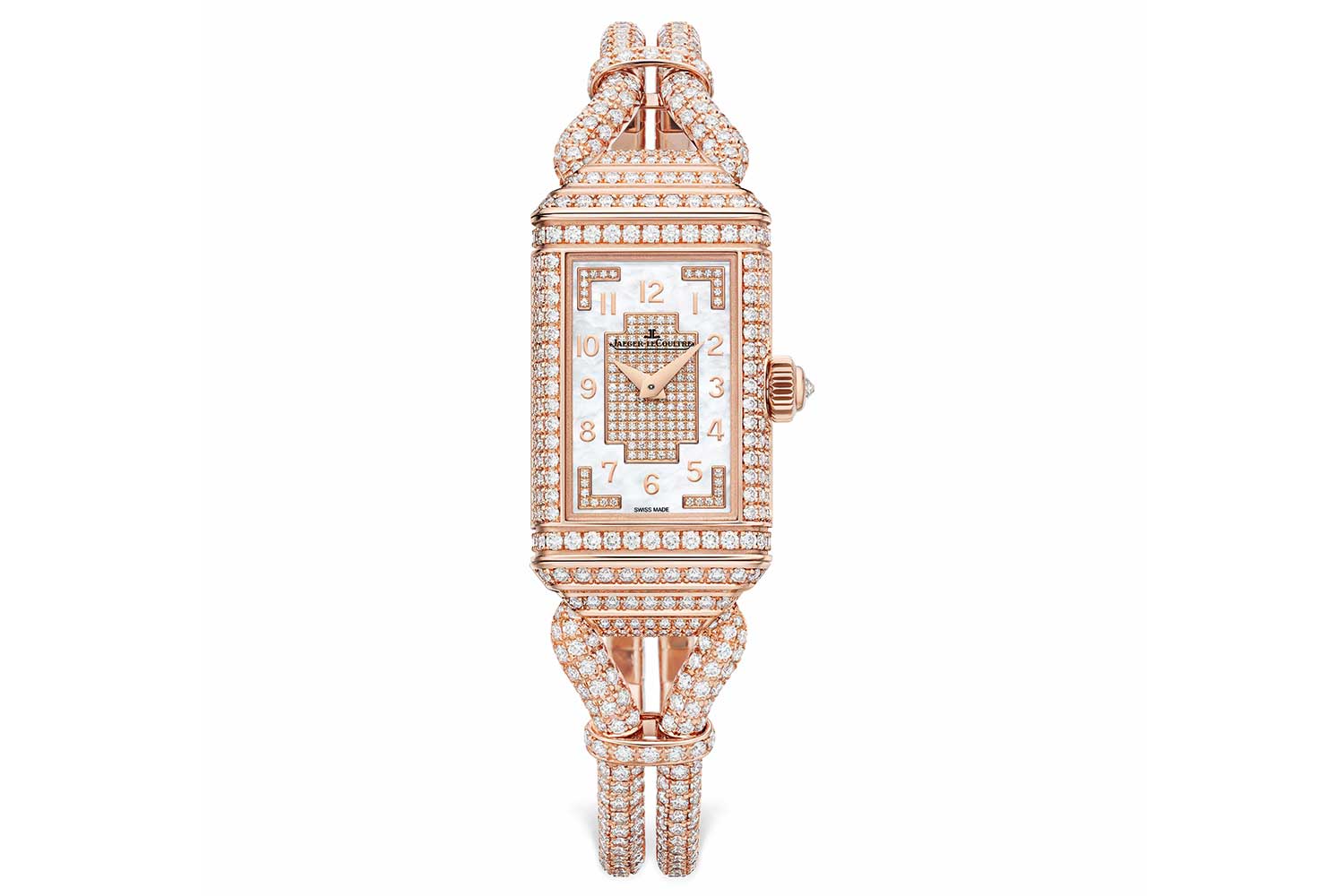
Reverso One Cordonnet Duetto Jewellery
Outstanding Innovation
During the 1980s, when most Swiss watch brands were looking for innovative ways to make a breakthrough in the Quartz Crisis, the Reverso was resuscitated with the quartz caliber 601 movement. Jaeger-LeCoultre was now making the Reverso cases in-house. In 1985, the brand unveiled a new case designed by one of its engineers, Daniel Wild. Though there was no question of playing with the aesthetics of the case, the new batch used CNC technology for the first time. Composed of 55 parts instead of 23 in the original, the new case was waterproof, dust-proof and equipped with a new flip-over mechanism.
As the revival of mechanical watches started to gain momentum in the 1990s, Günter Blümlein brought back the glory days of the Reverso. Together with Henry-John Belmont, then CEO of Jaeger-LeCoultre and French designer Janek Deleskiewicz, he re-energized the Reverso with a slew of complications for the watch’s 60th anniversary.
Crafted out of pink gold, the Reverso 60ème with a power reserve and date hand was introduced in 1991. The anniversary special was soon followed by the brand’s first tourbillon wristwatch in 1993, first minute repeater in 1994, first retrograde chronograph in 1996, and first perpetual calendar in 2000 — all in a Reverso.
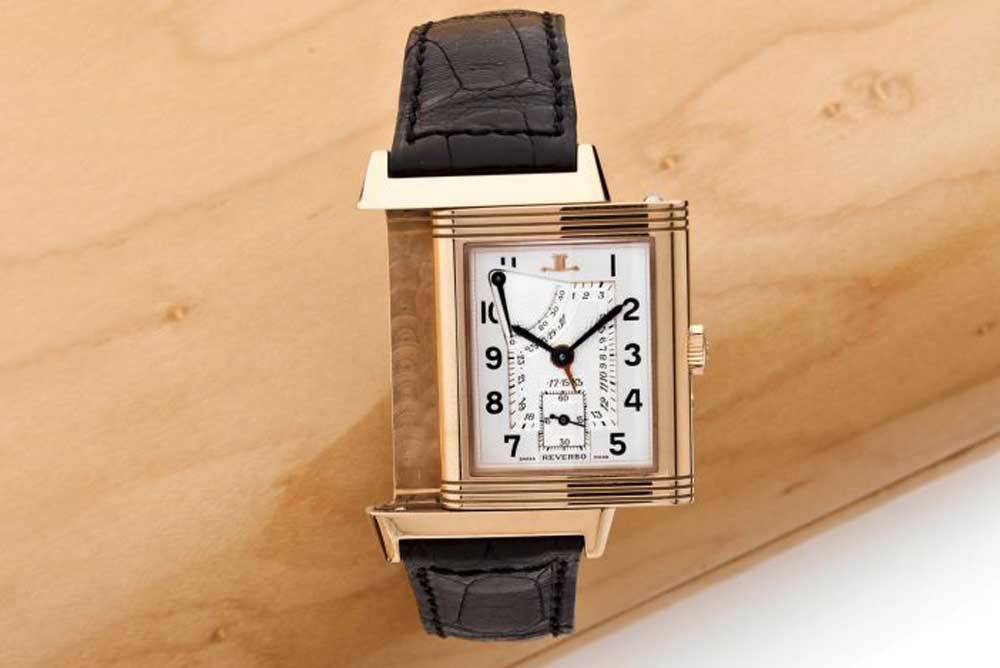
The Reverso 60ème introduced in 1991
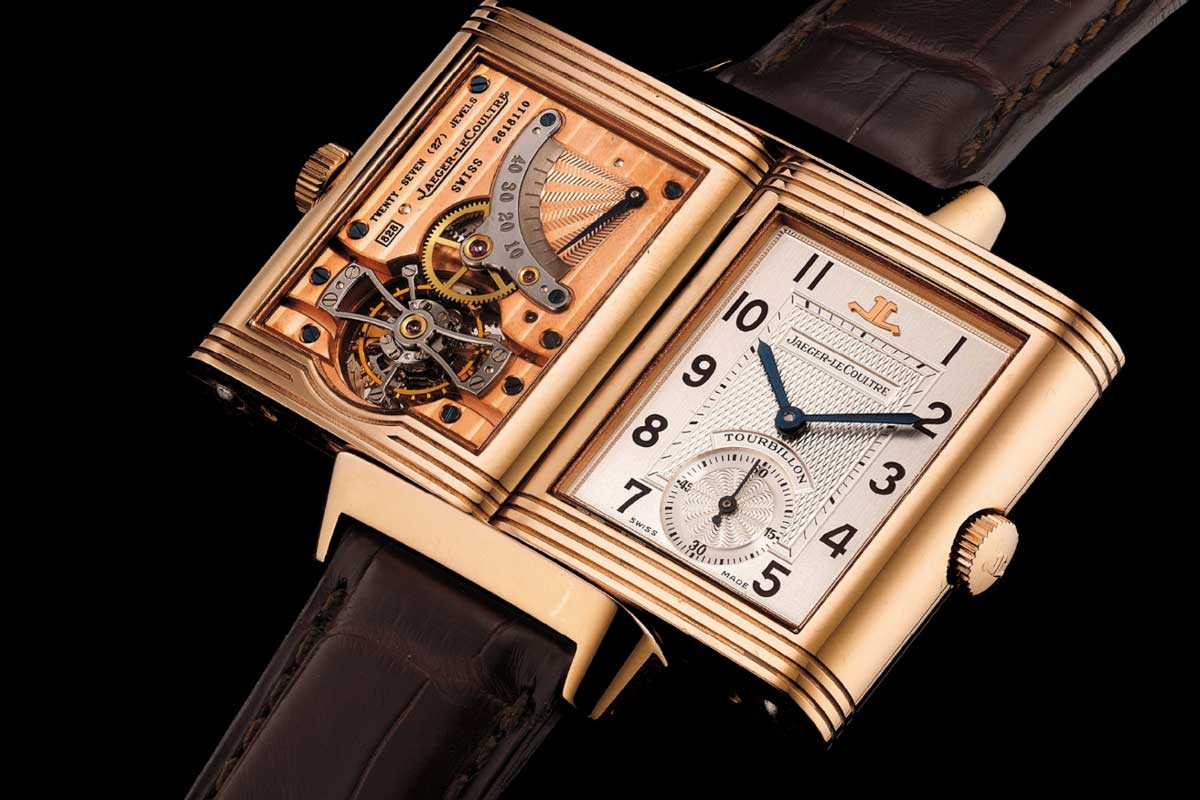
Jaeger-LeCoultre’s first tourbillon wristwatch from 1993
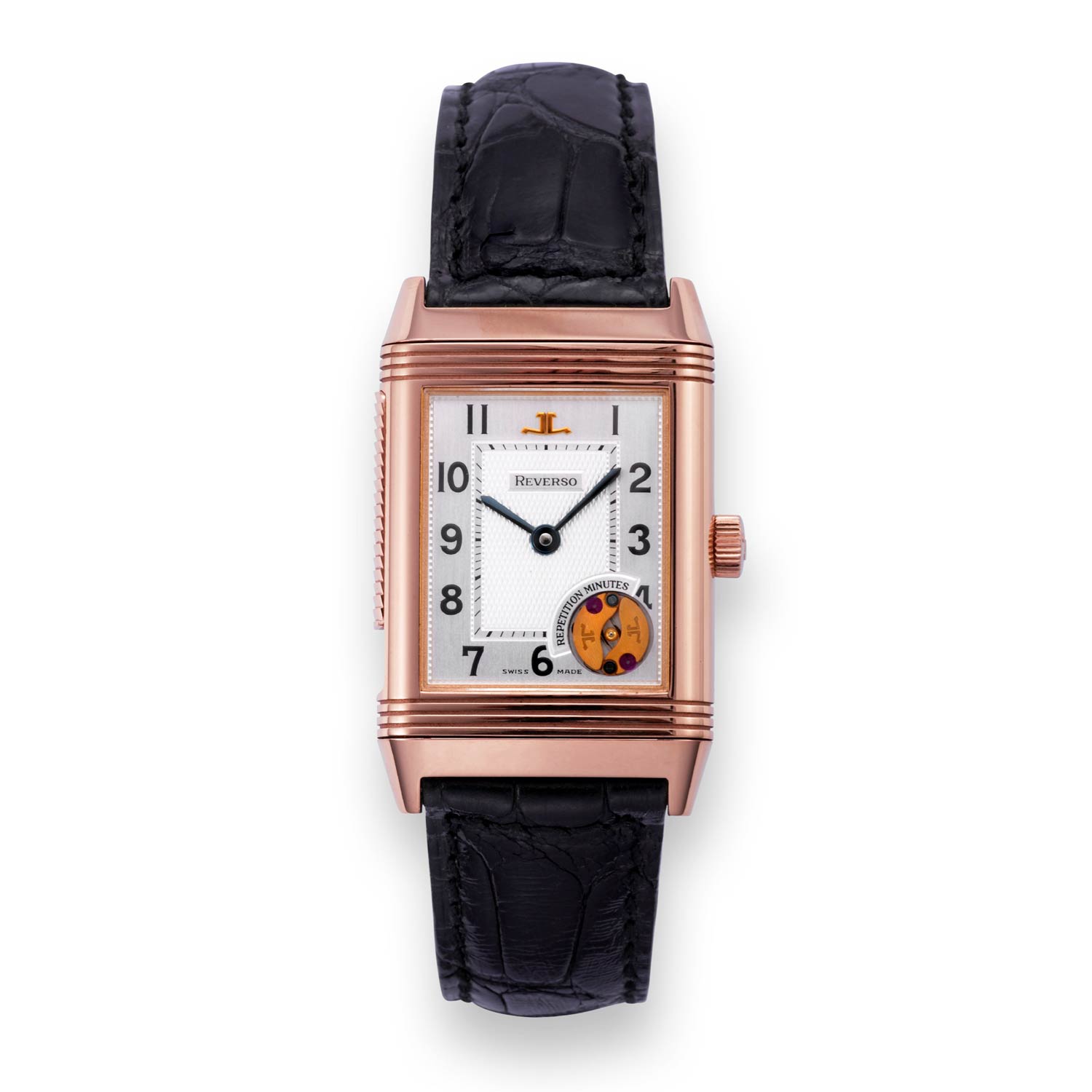
Introduced in 1994, the Reverso Répétition Minutes was equipped with the world’s first rectangular minute repeater movement.
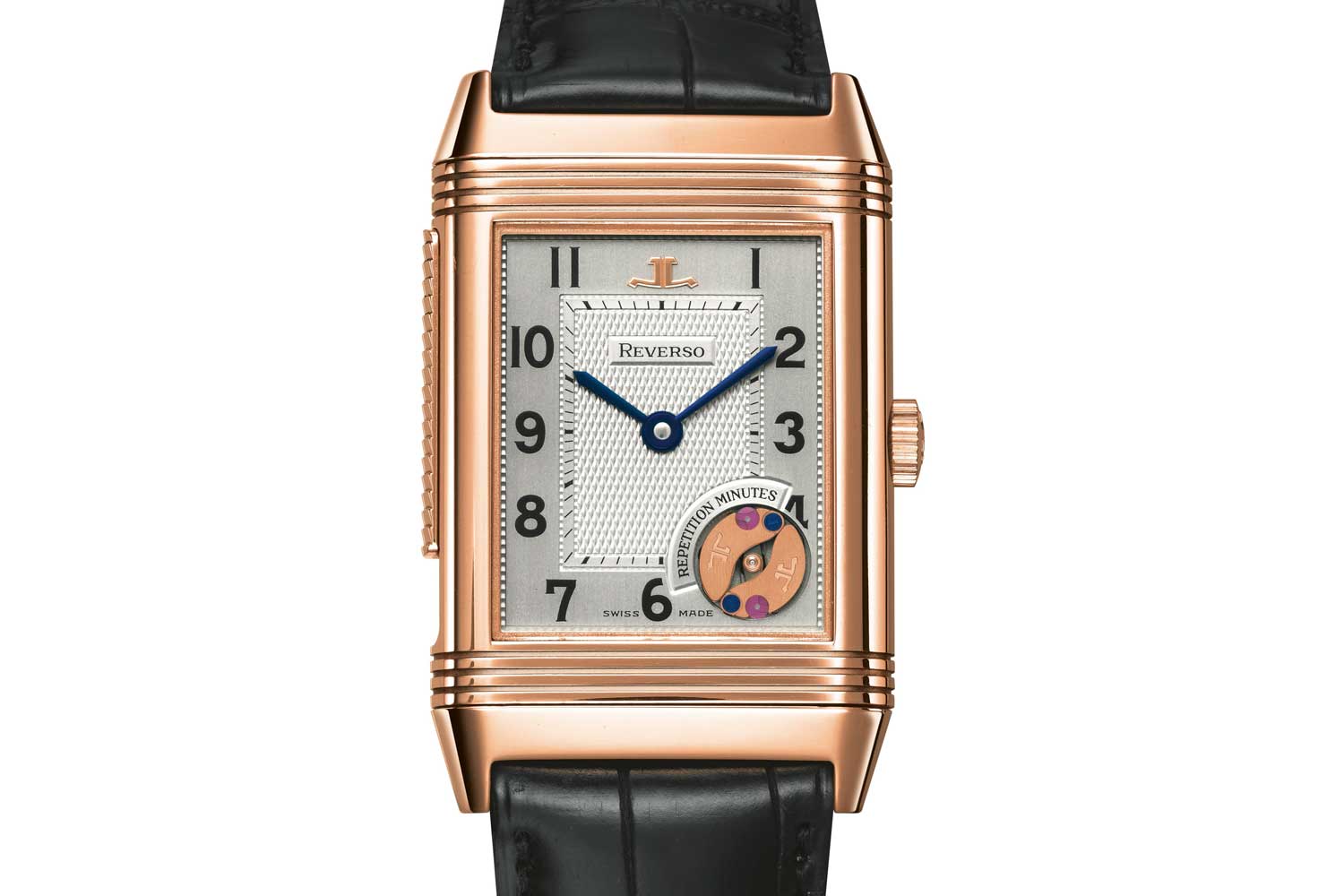
Jaeger LeCoultre Reverso Répétition Minutes
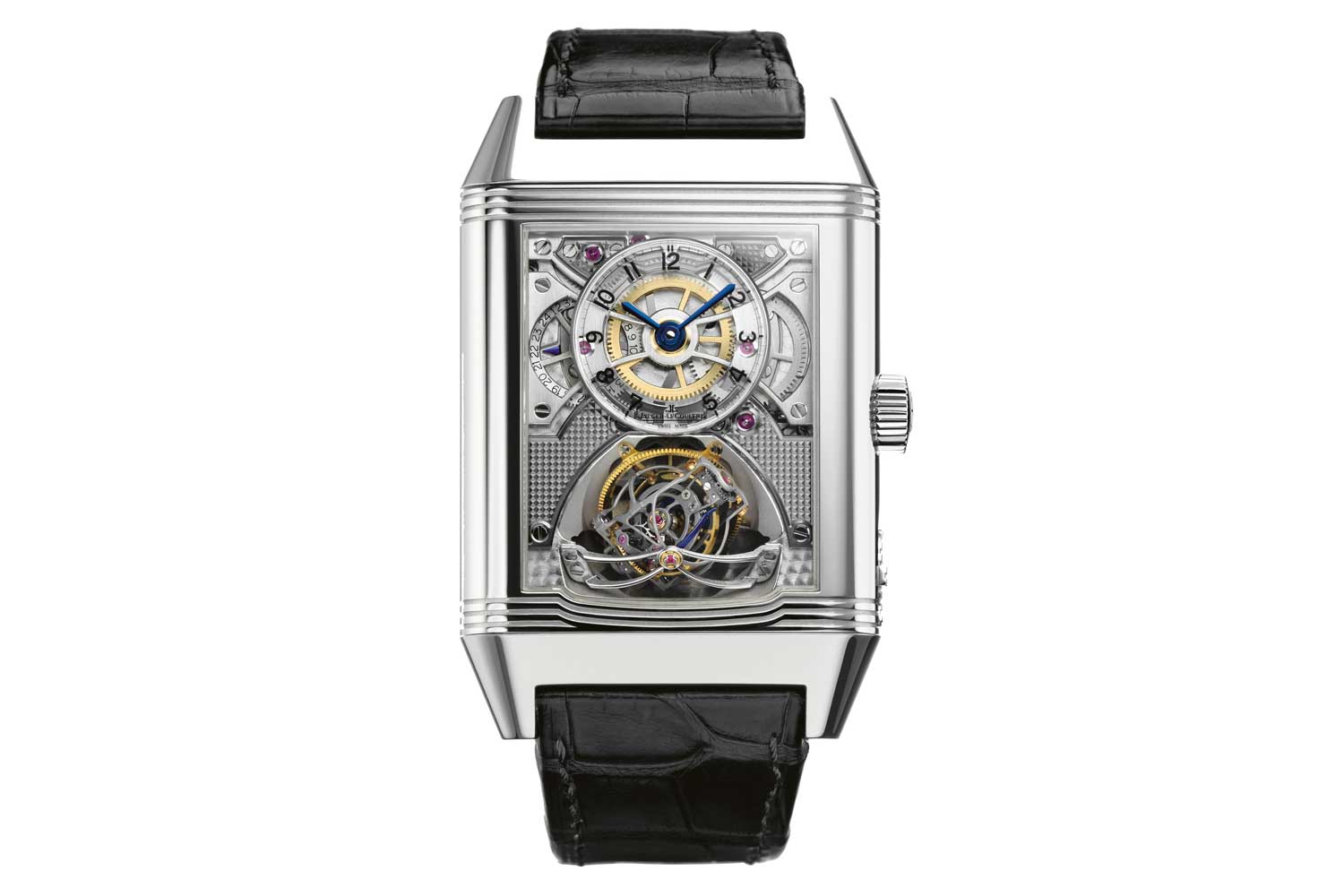
Reverso Gyrotourbillon 2
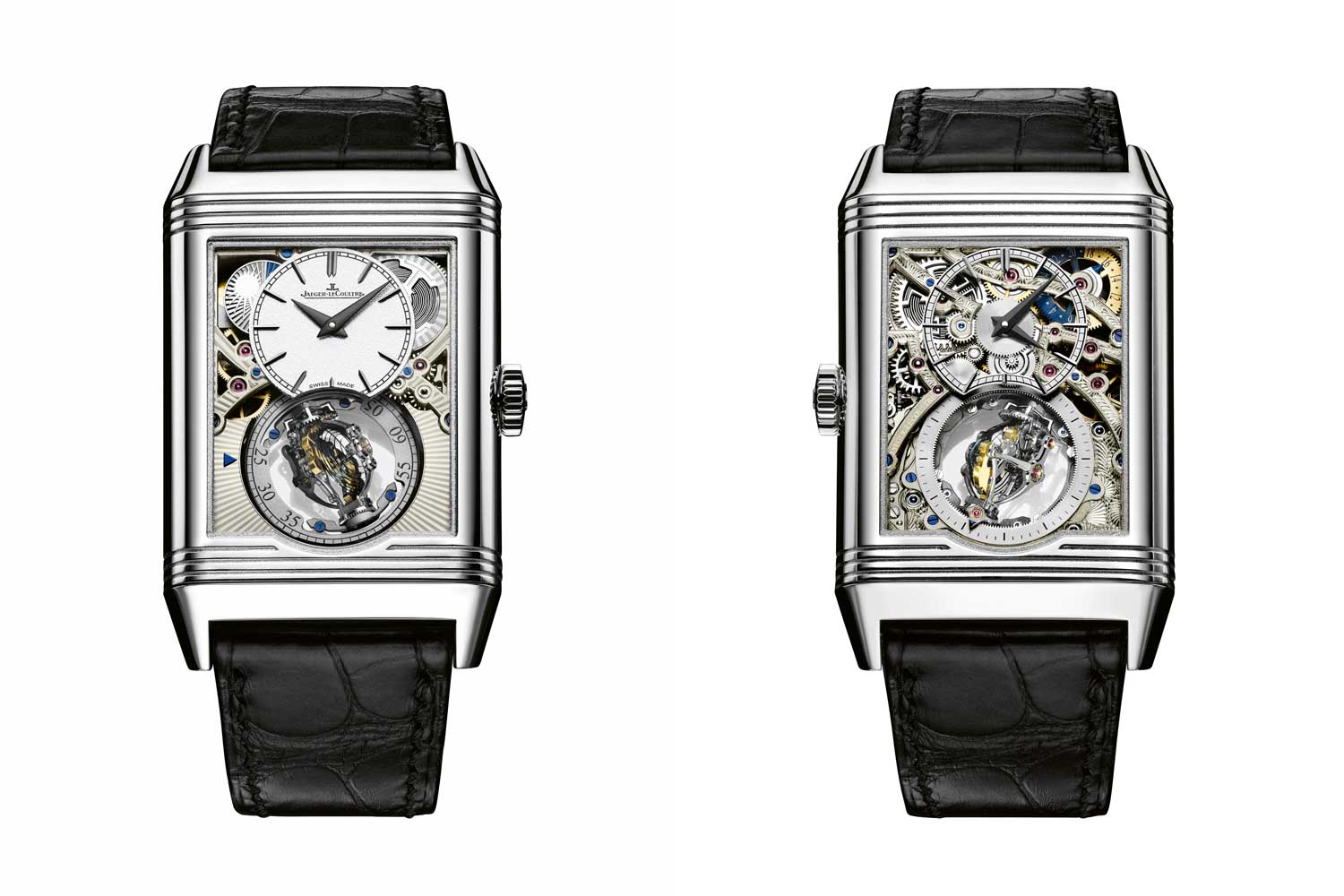
The two faces of the Reverso Tribute Gyrotourbillon
Conceptualized and designed over six years, the watch represents Jaeger-LeCoultre’s biggest strengths — its impeccable design sensibilities and supreme technical prowess. Unlike most grand complications, the Reverso Hybris Mechanica Quadriptyque with its captivating astronomical features doesn’t overwhelm you with a mind-bogglingly busy dial. It happens to be the world’s first wristwatch with four functioning display faces but all so cleverly packaged in a 51 × 31 × 15.15mm case that you’ll instantly want to play with it.
Originating from the Greek term hubris, the Hybris Mechanica is a representation of Jaeger-LeCoultre’s soaring ambition to conquer newer milestones in haute horlogerie. Over the last 18 years, the Hybris Mechanica family has showcased close to 20 groundbreaking creations in a variety of models — right from the Atmos Mystérieuse, which was the inaugural piece in the line in 2003, to the Master Hybris Mechanica Gyrotourbillon 1 from 2004, the Master Ultra Thin Minute Repeater Flying Tourbillon in 2014 and the Master Grande Tradition Gyrotourbillon Westminster Perpétuel in 2019.
On the Reverso’s 75th anniversary in 2006, Jaeger- LeCoultre introduced the Reverso Grande Complication à Triptyque, an ultra complicated timepiece made by 14 specialists. The watch had three dials displaying mean, sidereal, and perpetual times in one grand complication. The other features included display of moonphases, equation of time, zodiac calendar, astronomical chart, sunrise and sunset time, power reserve, day and night and leap year indicator.
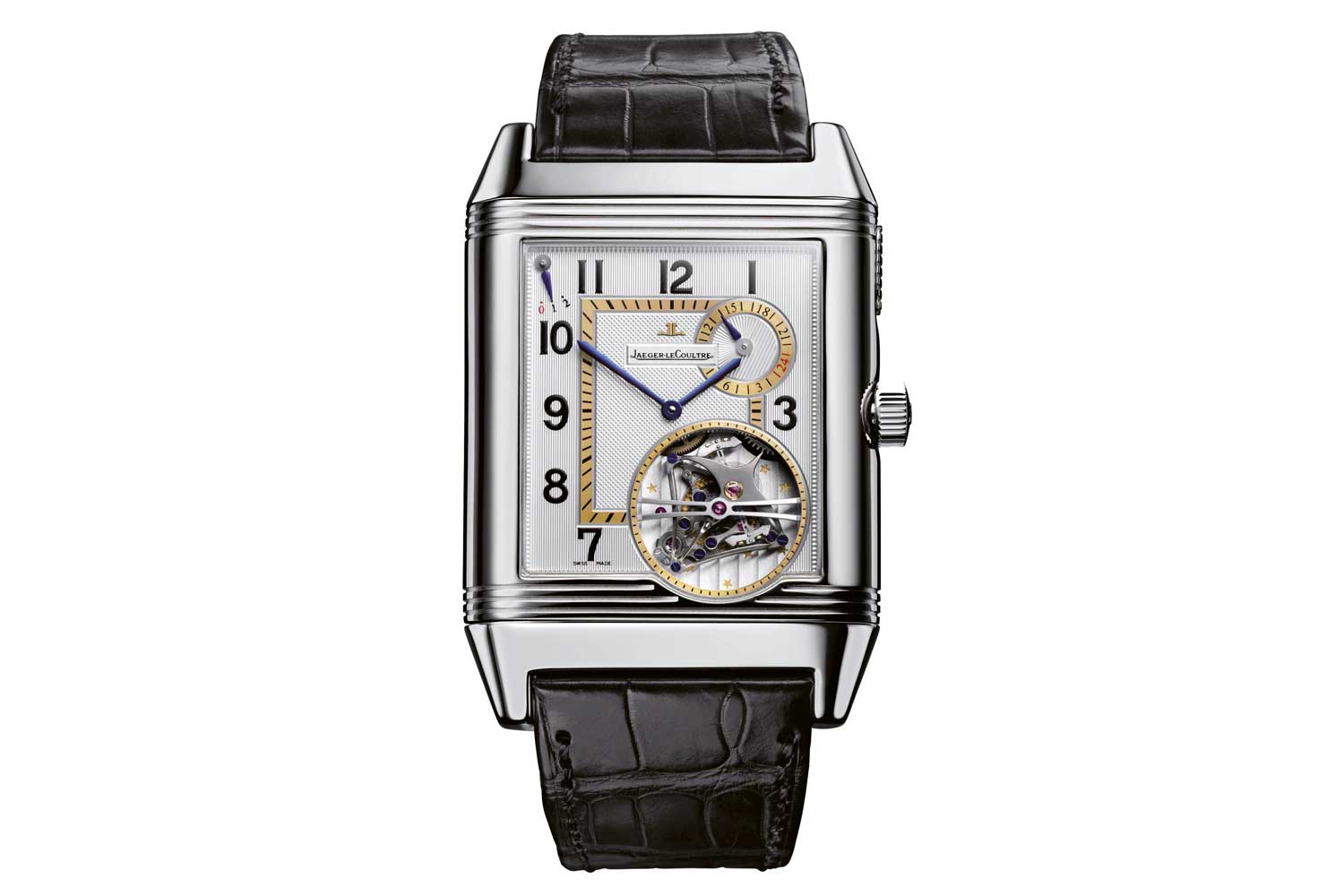
Reverso Grande Complication à Triptyque
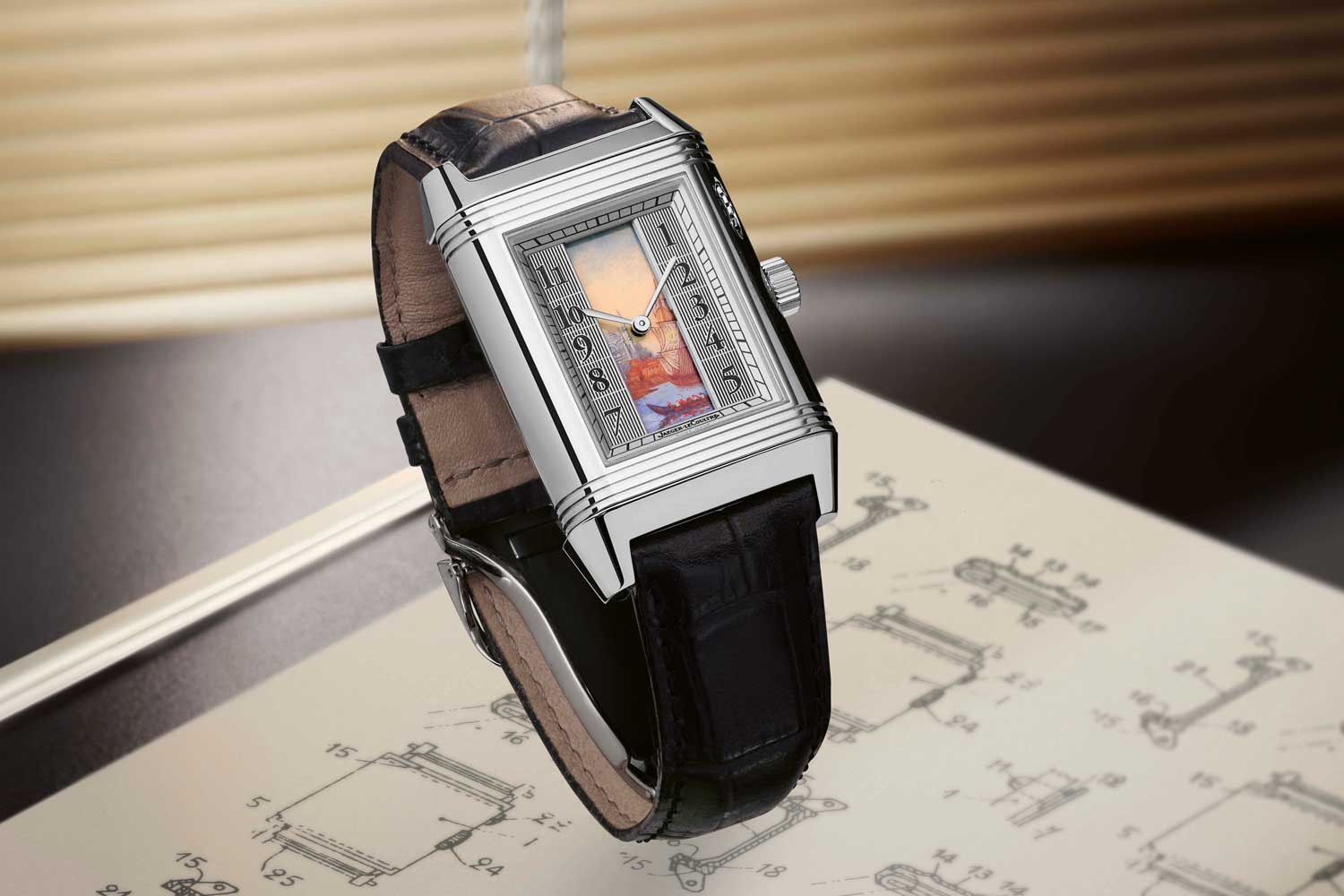
Reverso à Eclipse
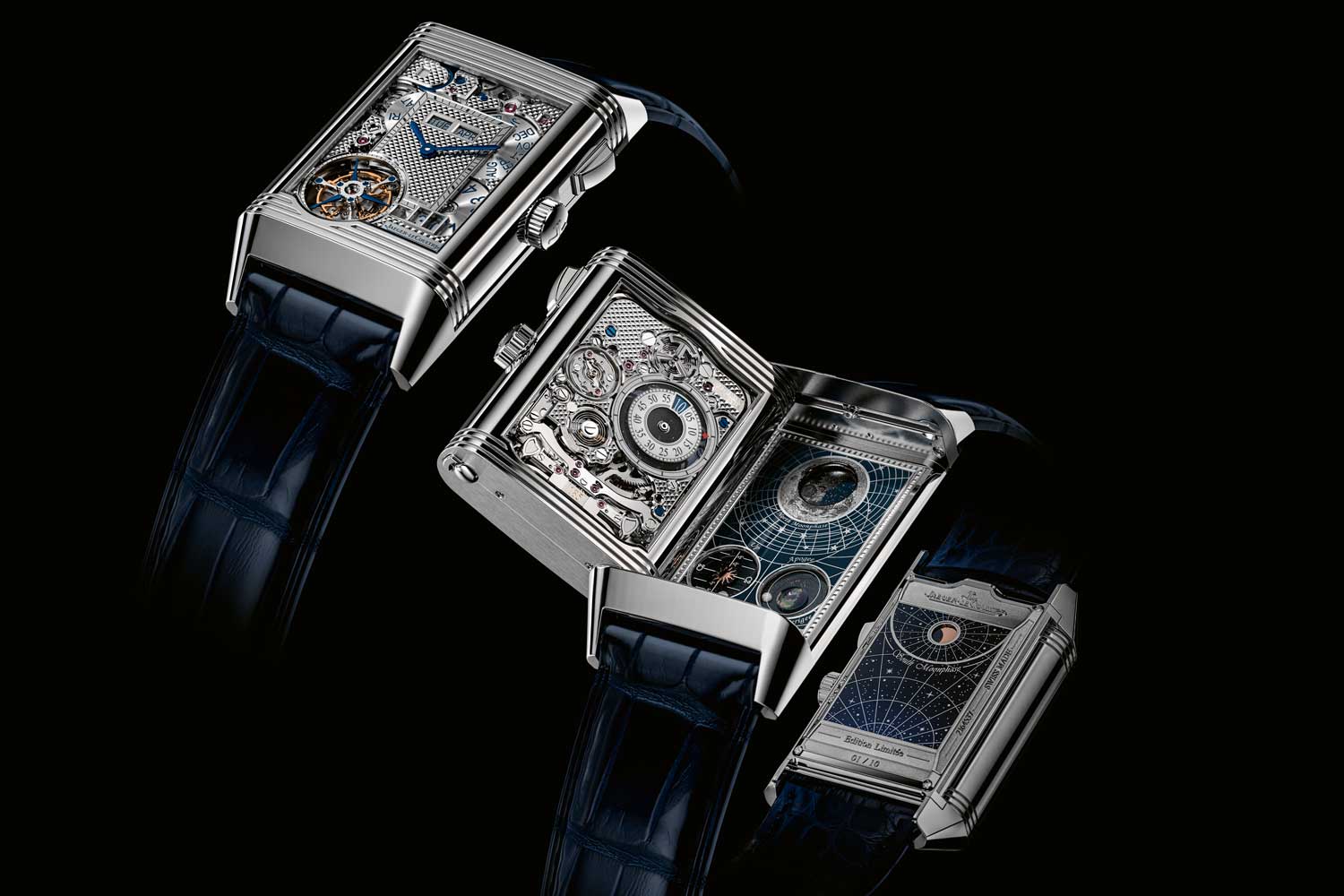
Reverso Hybris Mechanica Quadriptyque Caliber 185
The best part about this magical box is that you don’t have to worry about damaging the movement while correcting the settings. The entire process is designed to be controlled by the box corrector mechanism in a way that no kind of over- enthusiasm at your end can harm this pièce extraordinaire.










